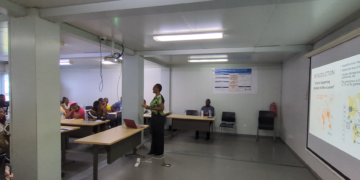By Kemo Cham
A high prevalence of drug resistance in Sierra Leone threatens to reverse decades of gains it made in healthcare, a new study has found.
Sierra Leone is one of 14 countries in Africa that were found to be dealing with this public health problem that is also known as anti-microbial drug resistance, according to findings of the study.
Drug resistance occurs when a microbe like bacteria or viruses change in a way that reduces the effectiveness of the drugs designed to kill or control them. When this happens, common infections become harder to treat, more expensive to manage, and more likely to spread.
This study focused on bacteria. Named the Mapping Antimicrobial Resistance and Antimicrobial Use Partnership (MAAP), it examined bacteria that commonly cause serious illness like E. coli, Staphylococcus aureus, and Klebsiella pneumoniae.
The study, described as the largest of its kind ever conducted in Africa, was led by a coalition that included the Africa Centres for Disease Control and Prevention (Africa CDC), the African Society for Laboratory Medicine (ASLM) and One Health Trust, with support from the UK’s Fleming Fund.
A statement from Africa CDC announcing the findings says the researchers reviewed more than 187,000 test results from 205 laboratories in the 14 countries that included Burkina Faso, Ghana, Mali, Nigeria and Senegal. The other countries are Eswatini, Ethiopia, Kenya, Malawi, Tanzania, Uganda, Zambia, and Zimbabwe. The data were reportedly collected between 2016 and 2019.
“One of the most concerning findings was that resistance to a powerful group of antibiotics, known as third-generation cephalosporins, was especially high in Ghana and Malawi,” the authors said.
They also noted that in six countries, more than half of the Staphylococcus aureus samples were resistant to methicillin—an antibiotic commonly used in hospitals. In Nigeria and Ghana, resistance levels exceeded 70%.
According to the findings, some groups were found more likely to have drug-resistant infections. It also reveals that susceptibility to resistance increase with age, as people over 65 were found to be 28 per cent more likely to have resistant infections than younger adults.
Patients already admitted to hospitals had a 24 per cent higher risk, likely due to increased exposure to antibiotics.
This study also revealed gaps in healthcare infrastructure to deal with the phenomenon, underscoring the urgent need to strengthen laboratory testing, data systems, and health planning to tackle hard-to-treat infections.
Less than 2 per cent of the health facilities that participated in the study were equipped to test for bacterial infections, and only 12 per cent of drug resistance records were linked to patient information, according to the results. And the authors said without this kind of data, it is more difficult for health officials to understand how and why resistance is spreading.
There was also a difference in data quality from country to country. While Senegal was found to have the strongest data collection system, Sierra Leone was found to be weak in this area. Many laboratories were found to be using handwritten records, and most lacked reliable digital systems.
The authors called for called on governments to make drug resistance a national priority by investing in better laboratories, routine testing, and stronger digital systems.
“For African countries, AMR remains a complex problem, leaving countries with a million-dollar question: ‘Where do we start from?’,” Dr Yewande Alimi, the One Health Unit Lead at Africa CDC, is quoted. “This study brings to light groundbreaking AMR data for African countries. We must act now—and together—to address AMR.”






















